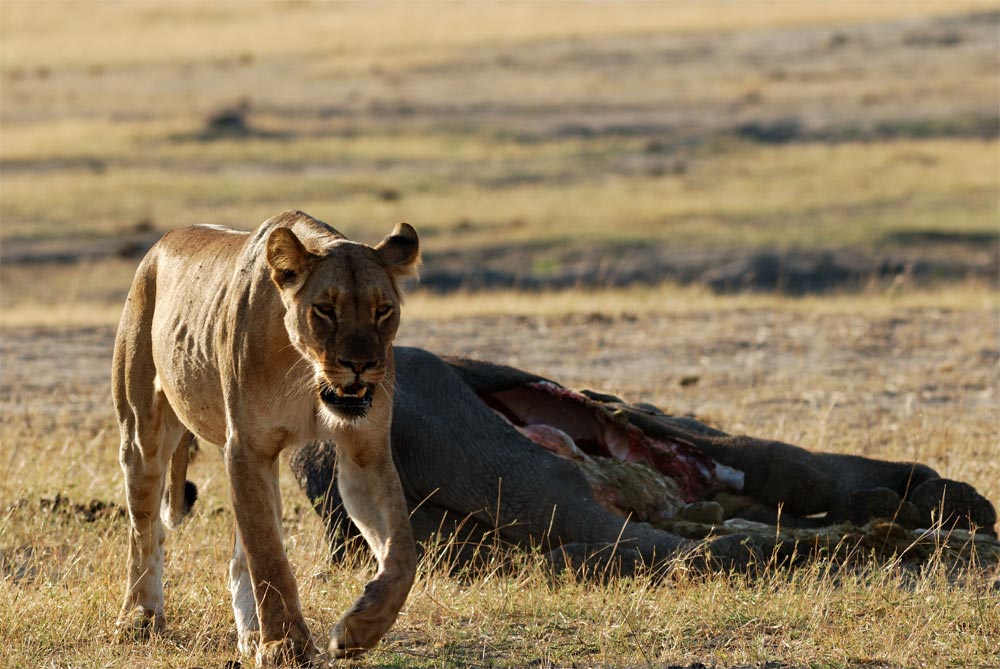Take That, Ladies! Male Lions Ambush Prey

Female lions have been thought of as the breadwinners (or, really, meatwinners) for their species, going out in groups to look for food at night.
New research, however, suggests male lions can be quite successful hunters, too, but they use solitary, ambush-style techniques to attack their prey instead of the cooperative stalking strategies of the females.
Researchers created 3D maps of the savanna vegetation in South Africa's Kruger National Park. They then overlaid GPS data from a pride of seven lions in the park, drawing lines of sight, or "viewsheds," that radiated outward from the spots where the lions rested to where they killed their prey.
Both male and female lions rested in shady areas with dense vegetation and short viewsheds during the day, the researchers found. But when it came time to look for food at night, lionesses rested and hunted in areas with large viewsheds, working together to find prey in open grassy savannas. Male lions, meanwhile, stuck to areas with dense vegetation and short viewsheds at night, but they also logged successful kills, suggesting that they were ambushing other animals from behind shrubs and trees.
The researchers say their study needs to be repeated among other lion prides in Africa's savannas to confirm their results, but their findings could have implications for wildlife management.
"By strongly linking male lion hunting behavior to dense vegetation, this study suggests that changes to vegetation structure, such as through fire management, could greatly alter the balance of predators and prey," study researcher Scott Loarie, of the Carnegie Institution for Science, said in a statement.
Carnegie's Greg Asner added: "With large mammals increasingly confined to protected areas, understanding how to maintain their habitat to best support their natural behavior is a critical conservation priority."
Sign up for the Live Science daily newsletter now
Get the world’s most fascinating discoveries delivered straight to your inbox.
The research was detailed last week in the journal Animal Behavior.
Follow LiveScience on Twitter @livescience. We're also on Facebook & Google+. Original article on LiveScience.com











